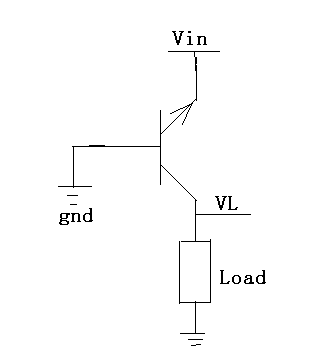Follow along with the video below to see how to install our site as a web app on your home screen.
Note: This feature may not be available in some browsers.
It's a base stage, like the upper part of a cascode stage (drawn upside down). Could serve as an impedance converter (low input impedance, high output impedance (Rout=Rload)), but for relatively small signal only: The emitter being at -0.7V (in case of Si), the collector could have something in between, say -0.45V, hence the max. output swing could be something like ± 200 .. 250mV . It has some voltage gain, current gain ≤ 1, no phase inversion.zarric said:who can tell me how to understand the npn used?

The voltage gain vu , in good approximation, is vu = 25/V * V(Rload) ,erikl said:It has some voltage gain ...
With the same approximation, and Ic = V(Rload)/RloadFvM said:The low input impedance would suggest an Iin rather than a Vin ...